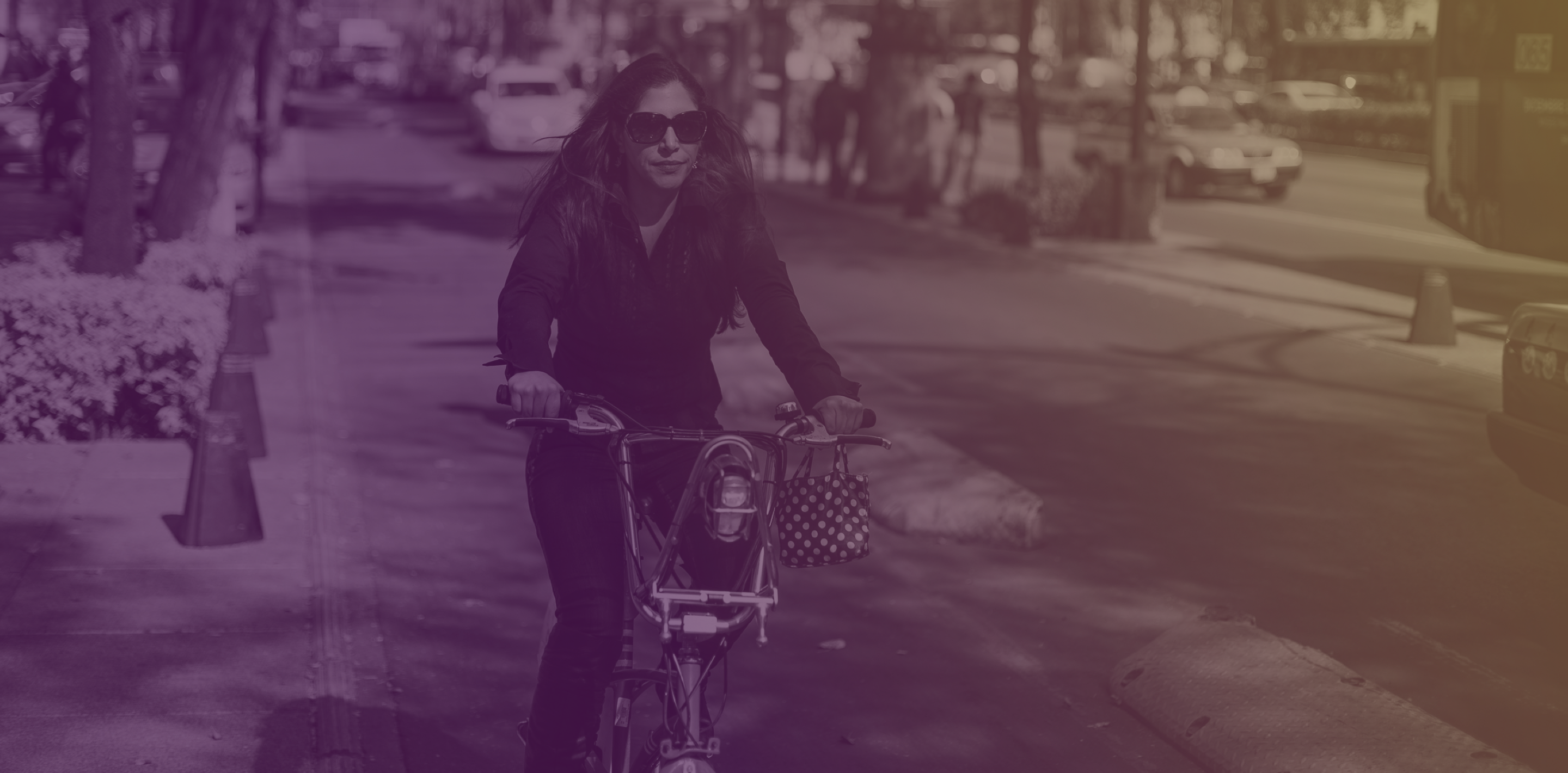- Population: 8.985.339
- Land area: 1.500 km2
- Daily Travelers: 17.300.000

- Population: 8.985.339
- Land area: 1.500 km2
- Daily Travelers: 17.300.000
Gender Mainstreaming
In Mexico City (CDMX), two gender-focused programs in the transportation system must be highlighted. The first one is Viaja Segura (Travel Safe), it was launched in 2008 and remained operational until 2012. The program was carried out through the Inter-institutional Collaboration Agreement, entered into by 11 key public transport institutions, and consists of two main lines of action: The prevention component (women-only train cars and transport units, and outreach campaigns) and the assistance and access to justice component (assistance booths).
The second one, CDMX Ciudad Segura y Amigable para Mujeres y Niñas (CDMX: A Safe and Friendly City for Women and Girls) is currently underway. The signature of the Memorandum of Understanding in 2013 between the Government of Mexico City and UN Women to launch the program paved the way for CDMX to become a member of the Global Initiative of UN Women Safe Cities for Women and Girls in 2015. The program aims to advance the rights of women and girls through actions to prevent and eliminate sexual violence in public spaces and transport; it also mainstreams gender in urban and infrastructure planning and transportation systems. It includes 5 main lines of action:
-
Viaja Segura (Travel Safe)
-
Camina Segura (Walk Safe)
-
Community engagement for the improvement and sustainability of safety conditions for women and girls in public spaces
-
Institutional strengthening of actions
-
Communication and dissemination of the right of women and girls to a life free of violence
All 39 Public Policies and 209 specific actions of this program are based on data obtained from the Encuesta de la Dinámica de la Relaciones en los Hogares (Survey on the Dynamics of Household Relations) (ENDIREH 2006 and 2011), Encuesta Nacional de Victimización y Percepción de Inseguridad (National Survey on Victimization and Perception of Insecurity) (ENVIPE 2014, 2015 and 2016), Diagnóstico sobre violencia contra las mujeres en la CDMX (Analysis of Violence against Women in CDMX) (EPADEQ, 2009) and Diagnóstico sobre violencia sexual contra las mujeres en el transporte y otros espacios públicos (Analysis of Sexual Violence against Women in Public Transport and other Public Spaces) (UN Women, COLMEX and INMUJERES, 2015.)
In addition, in order to coordinate the monitoring of this program and implement its lines of action, the Inter-institutional Commission for the implementation of the CDMX Safe and Friendly City for Women and Girls Program (Comisión Interinstitucional para la implementación del Programa CDMX Ciudad Segura y Amigable para Mujeres y Niñas) was set up, made up of 45 institutions.
One of the most remarkable activities within the framework of this program is Estrategia 30-100 (30-100 Strategy for Violence against Women in Public Transport and Public Spaces), which was launched on April 25, 2016 with the aim of promoting, during 100 days, a series of specific actions that would be assessed at the end of this period. These actions included:
-
Consideration of women safety in trips and journeys,
-
Assistance to victims of violence, mainly in public transport,
-
Access to justice to ensure that victims receive appropriate support and assistance,
-
Development of tools as part of a deterrence strategy and to engage the population; and
-
Development of a communication strategy.
The main initiatives, actions and activities developed in Mexico City in favor of gender equality in the transportation sector are presented below. Most of them are part of the two aforementioned programs, and many of the results were obtained from the assessment of Estrategia 30-100 (30-100 Strategy.)
Para ver esta información
debes ser miembro de TGL
Contact us

 Login
Login